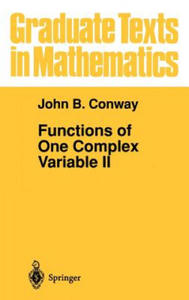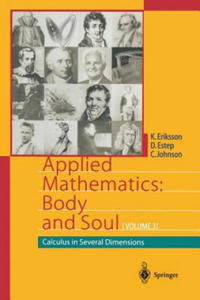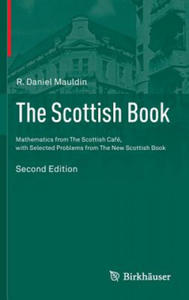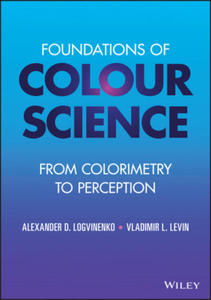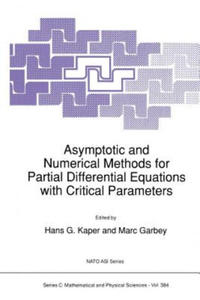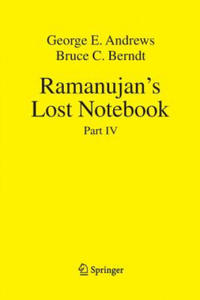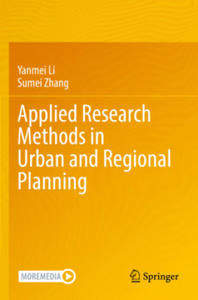krainaksiazek problems in mathematical analysis volume ii 20097247
- znaleziono 65 produktów w 6 sklepach
Functions of One Complex Variable II Springer-Verlag New York Inc.
Książki / Literatura obcojęzyczna
This book discusses a variety of problems which are usually treated in a second course on the theory of functions of one complex variable. It treats several topics in geometric function theory as well as potential theory in the plane. In particular it covers: conformal equivalence for simply connected regions, conformal equivalence for finitely connected regions, analytic covering maps, de Branges' proof of the Bieberbach conjecture, harmonic functions, Hardy spaces on the disk, potential theory in the plane. The level of the material is gauged for graduate students. Chapters XIII through XVII have the same prerequisites as the first volume of this text, GTM 11. For the remainder of the text it is assumed that the reader has a knowledge of integration theory and functional analysis. Definitions and theorems are stated clearly and precisely. Also contained in this book is an abundance of exercises of various degrees of difficulty.
Sklep: Libristo.pl
Applied Mathematics: Body and Soul Springer-Verlag Berlin and Heidelberg GmbH & Co....
Książki / Literatura obcojęzyczna
Applied Mathematics: Body & Soul is a mathematics education reform project developed at Chalmers University of Technology and includes a series of volumes and software. The program is motivated by the computer revolution opening new possibilitites of computational mathematical modeling in mathematics, science and engineering. It consists of a synthesis of Mathematical Analysis (Soul), Numerical Computation (Body) and Application. Volumes I-III present a modern version of Calculus and Linear Algebra, including constructive/numerical techniques and applications intended for undergraduate programs in engineering and science. Further volumes present topics such as Dynamical Systems, Fluid Dynamics, Solid Mechanics and Electro-Magnetics on an advanced undergraduate/graduate level. §The authors are leading researchers in Computational Mathematics who have written various successful books.Applied Mathematics: Body & Soul is a mathematics education reform project developed at Chalmers University of Technology and includes a series of volumes and software. The program is motivated by the computer revolution opening new possibilitites of computational mathematical modeling in mathematics, science and engineering. It consists of a synthesis of Mathematical Analysis (Soul), Numerical Computation (Body) and Application. Volumes I-III present a modern version of Calculus and Linear Algebra, including constructive/numerical techniques and applications intended for undergraduate programs in engineering and science. Further volumes present topics such as Dynamical Systems, Fluid Dynamics, Solid Mechanics and Electro-Magnetics on an advanced undergraduate/graduate level. §Volume I (Derivatives and Geometry in R3) presents basics of Calculus starting with the construction of the natural, rational, real and complex numbers, and proceeding to analytic geometry in two and three space dimensions, Lipschitz continuous functions and derivatives, together with a variety of applications.§Volume II (Integrals and Geomtery in Rn) develops the Riemann integral as the solution to the problem of determining a function given its derivative, and proceeds to generalizations in the form of initial value problems for general systems of ordinary differential equations, including a variety of applications. Linear algebra including numerics is also presented.§Volume III (Calculus in Several Dimensions) presents Calculus in several variables including partial derivatives, multi-dimensional integrals, partial differential equations and finite element methods, together with a variety of applications modeled as systems of partial differential equations.§The authors are leading researchers in Computational Mathematics who have written various successful books.§Further information on Applied Mathematics: Body and Soul can be found at http://www.phi.chalmers.se/bodysoul/.
Sklep: Libristo.pl
Applied Mathematics: Body and Soul Springer-Verlag Berlin and Heidelberg GmbH & Co....
Książki / Literatura obcojęzyczna
Applied Mathematics: Body & Soul is a mathematics education reform project developed at Chalmers University of Technology and includes a series of volumes and software. The program is motivated by the computer revolution opening new possibilities of computational mathematical modeling in mathematics, science and engineering. It consists of a synthesis of Mathematical Analysis (Soul), Numerical Computation (Body) and Application. Volumes I-III present a modern version of Calculus and Linear Algebra, including constructive/numerical techniques and applications intended for undergraduate programs in engineering and science. Further volumes present topics such as Dynamical Systems, Fluid Dynamics, Solid Mechanics and Electro-Magnetics on an advanced undergraduate/graduate level. §The authors are leading researchers in Computational Mathematics who have written various successful books.Applied Mathematics: Body & Soul is a mathematics education reform project developed at Chalmers University of Technology and includes a series of volumes and software. The program is motivated by the computer revolution opening new possibilities of computational mathematical modeling in mathematics, science and engineering. It consists of a synthesis of Mathematical Analysis (Soul), Numerical Computation (Body) and Application. Volumes I-III present a modern version of Calculus and Linear Algebra, including constructive/numerical techniques and applications intended for undergraduate programs in engineering and science. Further volumes present topics such as Dynamical Systems, Fluid Dynamics, Solid Mechanics and Electro-Magnetics on an advanced undergraduate/graduate level. §Volume I (Derivatives and Geometry in R3) presents basics of Calculus starting with the construction of the natural, rational, real and complex numbers, and proceeding to analytic geometry in two and three space dimensions, Lipschitz continuous functions and derivatives, together with a variety of applications.§Volume II (Integrals and Geometry in Rn) develops the Riemann integral as the solution to the problem of determining a function given its derivative, and proceeds to generalizations in the form of initial value problems for general systems of ordinary differential equations, including a variety of applications. Linear algebra including numerics is also presented.§Volume III (Calculus in Several Dimensions) presents Calculus in several variables including partial derivatives, multi-dimensional integrals, partial differential equations and finite element methods, together with a variety of applications modeled as systems of partial differential equations.§The authors are leading researchers in Computational Mathematics who have written various successful books.§Further information on Applied Mathematics: Body and Soul can be found at http://www.phi.chalmers.se/bodysoul/.
Sklep: Libristo.pl
Applied Mathematics: Body and Soul Springer-Verlag Berlin and Heidelberg GmbH & Co....
Książki / Literatura obcojęzyczna
Applied Mathematics: Body & Soul is a mathematics education reform project developed at Chalmers University of Technology and includes a series of volumes and software. The program is motivated by the computer revolution opening new possibilitites of computational mathematical modeling in mathematics, science and engineering. It consists of a synthesis of Mathematical Analysis (Soul), Numerical Computation (Body) and Application. Volumes I-III present a modern version of Calculus and Linear Algebra, including constructive/numerical techniques and applications intended for undergraduate programs in engineering and science. Further volumes present topics such as Dynamical Systems, Fluid Dynamics, Solid Mechanics and Electro-Magnetics on an advanced undergraduate/graduate level. §The authors are leading researchers in Computational Mathematics who have written various successful books.Applied Mathematics: Body & Soul is a mathematics education reform project developed at Chalmers University of Technology and includes a series of volumes and software. The program is motivated by the computer revolution opening new possibilities of computational mathematical modeling in mathematics, science and engineering. It consists of a synthesis of Mathematical Analysis (Soul), Numerical Computation (Body) and Application. Volumes I-III present a modern version of Calculus and Linear Algebra, including constructive/numerical techniques and applications intended for undergraduate programs in engineering and science. Further volumes present topics such as Dynamical Systems, Fluid Dynamics, Solid Mechanics and Electro-Magnetics on an advanced undergraduate/graduate level. §Volume I (Derivatives and Geometry in R3) presents basics of Calculus starting with the construction of the natural, rational, real and complex numbers, and proceeding to analytic geometry in two and three space dimensions, Lipschitz continuous functions and derivatives, together with a variety of applications.§Volume II (Integrals and Geomtery in Rn) develops the Riemann integral as the solution to the problem of determining a function given its derivative, and proceeds to generalizations in the form of initial value problems for general systems of ordinary differential equations, including a variety of applications. Linear algebra including numerics is also presented.§Volume III (Calculus in Several Dimensions) presents Calculus in several variables including partial derivatives, multi-dimensional integrals, partial differential equations and finite element methods, together with a variety of applications modeled as systems of partial differential equations.§The authors are leading researchers in Computational Mathematics who have written various successful books.§Further information on Applied Mathematics: Body and Soul can be found at http://www.phi.chalmers.se/bodysoul/.
Sklep: Libristo.pl
Stochastic Modeling in Economics and Finance Springer-Verlag New York Inc.
Książki / Literatura obcojęzyczna
In Part I, the fundamentals of financial thinking and elementary mathematical methods of finance are presented. The method of presentation is simple enough to bridge the elements of financial arithmetic and complex models of financial math developed in the later parts. It covers characteristics of cash flows, yield curves, and valuation of securities.§Part II is devoted to the allocation of funds and risk management: classics (Markowitz theory of portfolio), capital asset pricing model, arbitrage pricing theory, asset & liability management, value at risk. The method explanation takes into account the computational aspects.§Part III explains modeling aspects of multistage stochastic programming on a relatively accessible level. It includes a survey of existing software, links to parametric, multiobjective and dynamic programming, and to probability and statistics. It focuses on scenario-based problems with the problems of scenario generation and output analysis discussed in detail and illustrated within a case study.Unlike other books that focus only on selected specific subjects this book provides both a broad and rich cross-section of contemporary approaches to stochastic modeling in finance and economics; it is decision making oriented. The material ranges from common tools to solutions of sophisticated system problems and applications.§In Part I, the fundamentals of financial thinking and elementary mathematical methods of finance are presented. The method of presentation is simple enough to bridge the elements of financial arithmetic and complex models of financial math developed in the later parts. It covers characteristics of cash flows, yield curves, and valuation of securities.§Part II is devoted to the allocation of funds and risk management: classics (Markowitz theory of portfolio), capital asset pricing model, arbitrage pricing theory, asset & liability management, value at risk. The method explanation takes into account the computational aspects.§Part III explains modeling aspects of multistage stochastic programming on a relatively accessible level. It includes a survey of existing software, links to parametric, multiobjective and dynamic programming, and to probability and statistics. It focuses on scenario-based problems with the problems of scenario generation and output analysis discussed in detail and illustrated within a case study. Selected examples of successful applications in finance, production planning and management of technological processes and electricity generation are presented. Throughout, the emphasis is on the appropriate use of the techniques, rather than on the underlying mathematical proofs and theories.§In Part IV, the sections devoted to stochastic calculus cover also more advanced topics such as DDS Theorem or extremal martingale measures, which make it possible to treat more delicate models in Mathematical Finance (complete markets, optimal control, etc.)§Audience: Students and researchers in probability and statistics, econometrics, operations research and various fields of finance, economics, engineering, and insurance.
Sklep: Libristo.pl
Scottish Book Birkhauser
Książki / Literatura obcojęzyczna
The second edition of this book updates and expands upon a historically important collection of mathematical problems first published in the United States by Birkhäuser in 1981. These problems serve as a record of the informal discussions held by a group of mathematicians at the Scottish Café in Lwów, Poland, between the two world wars. Many of them were leaders in the development of such areas as functional and real analysis, group theory, measure and set theory, probability, and topology. Finding solutions to the problems they proposed has been ongoing since World War II, with prizes offered in many cases to those who are successful.§§In the 35 years since the first edition published, several more problems have been fully or partially solved, but even today many still remain unsolved and several prizes remain unclaimed. In view of this, the author has gathered new and updated commentaries on the original 193 problems. Some problems are solved for the first time in this edition. Included again in full are transcripts of lectures given by Stanislaw Ulam, Mark Kac, Antoni Zygmund, Paul Erdös, and Andrzej Granas that provide amazing insights into the mathematical environment of Lwów before World War II and the development of The Scottish Book . Also new in this edition are a brief history of the University of Wroclaw's New Scottish Book , created to revive the tradition of the original, and some selected problems from it.§§The Scottish Book offers a unique opportunity to communicate with the people and ideas of a time and place that had an enormous influence on the development of mathematics and try their hand on the unsolved problems. Anyone in the general mathematical community with an interest in the history of modern mathematics will find this to be an insightful and fascinating read.§
Sklep: Libristo.pl
Scottish Book Birkhauser Verlag AG
Książki / Literatura obcojęzyczna
The second edition of this book updates and expands upon a historically important collection of mathematical problems first published in the United States by Birkhäuser in 1981. These problems serve as a record of the informal discussions held by a group of mathematicians at the Scottish Café in Lwów, Poland, between the two world wars. Many of them were leaders in the development of such areas as functional and real analysis, group theory, measure and set theory, probability, and topology. Finding solutions to the problems they proposed has been ongoing since World War II, with prizes offered in many cases to those who are successful.In the 35 years since the first edition published, several more problems have been fully or partially solved, but even today many still remain unsolved and several prizes remain unclaimed. In view of this, the editor has gathered new and updated commentaries on the original 193 problems. Some problems are solved for the first time in this edition. Included again in full are transcripts of lectures given by Stanislaw Ulam, Mark Kac, Antoni Zygmund, Paul Erdös, and Andrzej Granas that provide amazing insights into the mathematical environment of Lwów before World War II and the development of The Scottish Book . Also new in this edition are a brief history of the University of Wroclaw's New Scottish Book , created to revive the tradition of the original, and some selected problems from it.The Scottish Book offers a unique opportunity to communicate with the people and ideas of a time and place that had an enormous influence on the development of mathematics and try their hand on the unsolved problems. Anyone in the general mathematical community with an interest in the history of modern mathematics will find this to be an insightful and fascinating read.
Sklep: Libristo.pl
Foundations of Colour Science - From Colorimetry to Perception John Wiley and Sons Ltd
Książki / Literatura obcojęzyczna
Presents the science of colour from new perspectives and outlines results obtained from the authors' work in the mathematical theory of colourThis innovative volume summarizes existing knowledge in the field, attempting to present as much data as possible about colour, accumulated in various branches of science (physics, phychophysics, colorimetry, physiology) from a unified theoretical position. Written by a colour specialist and a professional mathematician, the book offers a new theoretical framework based on functional analysis and convex analysis. Employing these branches of mathematics, instead of more conventional linear algebra, allows them to provide the knowledge required for developing techniques to measure colour appearance to the standards adopted in colorimetric measurements. The authors describe the mathematics in a language that is understandable for colour specialists and include a detailed overview of all chapters to help readers not familiar with colour science.Divided into two parts, the book first covers various key aspects of light colour, such as colour stimulus space, colour mechanisms, colour detection and discrimination, light-colour perception typology, and light metamerism. The second part focuses on object colour, featuring detailed coverage of object-colour perception in single- and multiple-illuminant scenes, object-colour solid, colour constancy,metamer mismatching, object-colour indeterminacy and more. Throughout the book, the authors combine differential geometry and topology with the scientific principles on which colour measurement and specification are currently based and applied in industrial applications.* Presents a unique compilation of the author's substantial contributions to colour science* Offers a new approach to colour perception and measurement, developing the theoretical framework used in colorimetry* Bridges the gap between colour engineering and a coherent mathematical theory of colour* Outlines mathematical foundations applicable to the colour vision of humans and animals as well as technologies equipped with artificial photosensors* Contains algorithms for solving various problems in colour science, such as the mathematical problem of describing metameric lights* Formulates all results to be accessible to non-mathematicians and colour specialistsFoundations of Colour Science: From Colorimetry to Perception is an invaluable resource for academics, researchers, industry professionals and undergraduate and graduate students with interest in a mathematical approach to the science of colour.
Sklep: Libristo.pl
Asymptotic and Numerical Methods for Partial Differential Equations with Critical Parameters, 1 Springer Netherlands
Książki / Literatura obcojęzyczna
This volume provides a record of the workshop on asymptotic-induced numerical methods for partial differential equations, critical parameters and domain decomposition, held at Beaune, France. §Discussing new computational methods, recent algorithm developments, and state-of-the-art techniques in mathematical modeling, Asymptotic and Numerical Methods for Partial Differential Equations with Critical Parameters explores important topics in theory and application, including:§modeling of complex fluid dynamics systems; §asymptotic-induced domain decomposition methods; §analysis of strongly nonlinear problems; §tools available for modern numerical analysis; and §symbolic manipulation tools for multiscale problems. Asymptotic and Numerical Methods for Partial Differential Equations with Critical Parameters presents a panoramic view of areas where asymptotic analysis, numerical analysis, and scientific computing are beginning to be integrated effectively. With articles ranging from mathematical models and applications to state-of-the-art algorithms and computational methods, the book is an invaluable text for mathematicians, engineers, and computer scientists who wish to become involved in this challenging new area of research. §
Sklep: Libristo.pl
Variational Principles of Mechanics Dover Publications
Książki / Literatura obcojęzyczna
Introduction 1. The variational approach to mechanics 2. The procedure of Euler and Lagrange 3. Hamilton's procedure 4. The calculus of variations 5. Comparison between the vectorial and the variational treatments of mechanics 6. Mathematical evaluation of the variational principles 7. Philosophical evaluation of the variational approach to mechanics I. The Basic Concepts of Analytical Mechanics 1. The Principal viewpoints of analytical mechanics 2. Generalized coordinates 3. The configuration space 4. Mapping of the space on itself 5. Kinetic energy and Riemannian geometry 6. Holonomic and non-holonomic mechanical systems 7. Work function and generalized force 8. Scleronomic and rheonomic systems. The law of the conservation of energy II. The Calculus of Variations 1. The general nature of extremum problems 2. The stationary value of a function 3. The second variation 4. Stationary value versus extremum value 5. Auxiliary conditions. The Lagrangian lambda-method 6. Non-holonomic auxiliary conditions 7. The stationary value of a definite integral 8. The fundamental processes of the calculus of variations 9. The commutative properties of the delta-process 10. The stationary value of a definite integral treated by the calculus of variations 11. The Euler-Lagrange differential equations for n degrees of freedom 12. Variation with auxiliary conditions 13. Non-holonomic conditions 14. Isoperimetric conditions 15. The calculus of variations and boundary conditions. The problem of the elastic bar III. The principle of virtual work 1. The principle of virtual work for reversible displacements 2. The equilibrium of a rigid body 3. Equivalence of two systems of forces 4. Equilibrium problems with auxiliary conditions 5. Physical interpretation of the Lagrangian multiplier method 6. Fourier's inequality IV. D'Alembert's principle 1. The force of inertia 2. The place of d'Alembert's principle in mechanics 3. The conservation of energy as a consequence of d'Alembert's principle 4. Apparent forces in an accelerated reference system. Einstein's equivalence hypothesis 5. Apparent forces in a rotating reference system 6. Dynamics of a rigid body. The motion of the centre of mass 7. Dynamics of a rigid body. Euler's equations 8. Gauss' principle of least restraint V. The Lagrangian equations of motion 1. Hamilton's principle 2. The Lagrangian equations of motion and their invariance relative to point transformations 3. The energy theorem as a consequence of Hamilton's principle 4. Kinosthenic or ignorable variables and their elimination 5. The forceless mechanics of Hertz 6. The time as kinosthenic variable; Jacobi's principle; the principle of least action 7. Jacobi's principle and Riemannian geometry 8. Auxiliary conditions; the physical significance of the Lagrangian lambda-factor 9. Non-holonomic auxiliary conditions and polygenic forces 10. Small vibrations about a state of equilibrium VI. The Canonical Equations of motion 1. Legendre's dual transformation 2. Legendre's transformation applied to the Lagrangian function 3. Transformation of the Lagrangian equations of motion 4. The canonical integral 5. The phase space and the space fluid 6. The energy theorem as a consequence of the canonical equations 7. Liouville's theorem 8. Integral invariants, Helmholtz' circulation theorem 9. The elimination of ignorable variables 10. The parametric form of the canonical equations VII. Canonical Transformations 1. Coordinate transformations as a method of solving mechanical problems 2. The Lagrangian point transformations 3. Mathieu's and Lie's transformations 4. The general canonical transformation 5. The bilinear differential form 6. The bracket expressions of Lagrange and Poisson 7. Infinitesimal canonical transformations 8. The motion of the phase fluid as a continuous succession of canonical transformations 9. Hamilton's principal function and the motion of the phase fluid VIII. The Partial differential equation of Hamilton-Jacobi 1. The importance of the generating function for the problem of motion 2. Jacobi's transformation theory 3. Solution of the partial differential equation by separation 4. Delaunay's treatment of separable periodic systems 5. The role of the partial differential equation in the theories of Hamilton and Jacobi 6. Construction of Hamilton's principal function with the help of Jacobi's complete solution 7. Geometrical solution of the partial differential equation. Hamilton's optico-mechanical analogy 8. The significance of Hamilton's partial differential equation in the theory of wave motion 9. The geometrization of dynamics. Non-Riemannian geometrics. The metrical significance of Hamilton's partial differential equation IX. Relativistic Mechanics 1. Historical Introduction 2. Relativistic kinematics 3. Minkowski's four-dimensional world 4. The Lorentz transformations 5. Mechanics of a particle 6. The Hamiltonian formulation of particle dynamics 7. The potential energy V 8. Relativistic formulation of Newton's scalar theory of gravitation 9. Motion of a charged particle 10. Geodesics of a four-dimensional world 11. The planetary orbits in Einstein's gravitational theory 12. The gravitational bending of light rays 13. The gravitational red-shirt of the spectral lines Bibliography X. Historical Survey XI. Mechanics of the Continua 1. The variation of volume integrals 2. Vector-analytic tools 3. Integral theorems 4. The conservation of mass 5. Hydrodynamics of ideal fluids 6. The hydrodynamic equations in Lagrangian formulation 7. Hydrostatics 8. The circulation theorem 9. Euler's form of the hydrodynamic equations 10. The conservation of energy 11. Elasticity. Mathematical tools 12. The strain tensor 13. The stress tensor 14. Small elastic vibrations 15. The Hamiltonization of variational problems 16. Young's modulus. Poisson's ratio 17. Elastic stability 18. Electromagnetism. Mathematical tools 19. The Maxwell equations 20. Noether's principle 21. Transformation of the coordinates 22. The symmetric energy-momentum tensor 23. The ten conservation laws 24. The dynamic law in field theoretical derivation Appendix I; Appendix II; Bibliography; Index
Sklep: Libristo.pl
Ramanujan's Lost Notebook Springer-Verlag New York Inc.
Książki / Literatura obcojęzyczna
In the spring of 1976, George Andrews of Pennsylvania State University visited the library at Trinity College, Cambridge, to examine the papers of the late G.N. Watson. Among these papers, Andrews discovered a sheaf of 138 pages in the handwriting of Srinivasa Ramanujan. This manuscript was soon designated, "Ramanujan's lost notebook." Its discovery has frequently been deemed the mathematical equivalent of finding Beethoven's tenth symphony.§§This volume is the fourth of five volumes that the authors plan to write on Ramanujan's lost notebook. In contrast to the first three books on Ramanujan's Lost Notebook, the fourth book does not focus on q-series. Most of the entries examined in this volume fall under the purviews of number theory and classical analysis. Several incomplete manuscripts of Ramanujan published by Narosa with the lost notebook are discussed. Three of the partial manuscripts are on diophantine approximation, and others are in classical Fourier analysis and prime number theory. Most of the entries in number theory fall under the umbrella of classical analytic number theory. Perhaps the most intriguing entries are connected with the classical, unsolved circle and divisor problems.§§Review from the second volume:§§"Fans of Ramanujan's mathematics are sure to be delighted by this book. While some of the content is taken directly from published papers, most chapters contain new material and some previously published proofs have been improved. Many entries are just begging for further study and will undoubtedly be inspiring research for decades to come. The next installment in this series is eagerly awaited."§§- MathSciNet§§Review from the first volume:§§"Andrews and Berndt are to be congratulated on the job they are doing. This is the first step...on the way to an understanding of the work of the genius Ramanujan. It should act as an inspiration to future generations of mathematicians to tackle a job that will never be complete."§§- Gazette of the Australian Mathematical Society§
Sklep: Libristo.pl
Variational Principles of Mechanics Dover Publications Inc.
Książki / Literatura obcojęzyczna
Introduction 1. The variational approach to mechanics 2. The procedure of Euler and Lagrange 3. Hamilton's procedure 4. The calculus of variations 5. Comparison between the vectorial and the variational treatments of mechanics 6. Mathematical evaluation of the variational principles 7. Philosophical evaluation of the variational approach to mechanicsI. The Basic Concepts of Analytical Mechanics 1. The Principal viewpoints of analytical mechanics 2. Generalized coordinates 3. The configuration space 4. Mapping of the space on itself 5. Kinetic energy and Riemannian geometry 6. Holonomic and non-holonomic mechanical systems 7. Work function and generalized force 8. Scleronomic and rheonomic systems. The law of the conservation of energyII. The Calculus of Variations 1. The general nature of extremum problems 2. The stationary value of a function 3. The second variation 4. Stationary value versus extremum value 5. Auxiliary conditions. The Lagrangian lambda-method 6. Non-holonomic auxiliary conditions 7. The stationary value of a definite integral 8. The fundamental processes of the calculus of variations 9. The commutative properties of the delta-process 10. The stationary value of a definite integral treated by the calculus of variations 11. The Euler-Lagrange differential equations for n degrees of freedom 12. Variation with auxiliary conditions 13. Non-holonomic conditions 14. Isoperimetric conditions 15. The calculus of variations and boundary conditions. The problem of the elastic barIII. The principle of virtual work 1. The principle of virtual work for reversible displacements 2. The equilibrium of a rigid body 3. Equivalence of two systems of forces 4. Equilibrium problems with auxiliary conditions 5. Physical interpretation of the Lagrangian multiplier method 6. Fourier's inequalityIV. D'Alembert's principle 1. The force of inertia 2. The place of d'Alembert's principle in mechanics 3. The conservation of energy as a consequence of d'Alembert's principle 4. Apparent forces in an accelerated reference system. Einstein's equivalence hypothesis 5. Apparent forces in a rotating reference system 6. Dynamics of a rigid body. The motion of the centre of mass 7. Dynamics of a rigid body. Euler's equations 8. Gauss' principle of least restraintV. The Lagrangian equations of motion 1. Hamilton's principle 2. The Lagrangian equations of motion and their invariance relative to point transformations 3. The energy theorem as a consequence of Hamilton's principle 4. Kinosthenic or ignorable variables and their elimination 5. The forceless mechanics of Hertz 6. The time as kinosthenic variable; Jacobi's principle; the principle of least action 7. Jacobi's principle and Riemannian geometry 8. Auxiliary conditions; the physical significance of the Lagrangian lambda-factor 9. Non-holonomic auxiliary conditions and polygenic forces 10. Small vibrations about a state of equilibriumVI. The Canonical Equations of motion 1. Legendre's dual transformation 2. Legendre's transformation applied to the Lagrangian function 3. Transformation of the Lagrangian equations of motion 4. The canonical integral 5. The phase space and the space fluid 6. The energy theorem as a consequence of the canonical equations 7. Liouville's theorem 8. Integral invariants, Helmholtz' circulation theorem 9. The elimination of ignorable variables 10. The parametric form of the canonical equationsVII. Canonical Transformations 1. Coordinate transformations as a method of solving mechanical problems 2. The Lagrangian point transformations 3. Mathieu's and Lie's transformations 4. The general canonical transformation 5. The bilinear differential form 6. The bracket expressions of Lagrange and Poisson 7. Infinitesimal canonical transformations 8. The motion of the phase fluid as a continuous succession of canonical transformations 9. Hamilton's principal function and the motion of the phase fluidVIII. The Partial differential equation of Hamilton-Jacobi 1. The importance of the generating function for the problem of motion 2. Jacobi's transformation theory 3. Solution of the partial differential equation by separation 4. Delaunay's treatment of separable periodic systems 5. The role of the partial differential equation in the theories of Hamilton and Jacobi 6. Construction of Hamilton's principal function with the help of Jacobi's complete solution 7. Geometrical solution of the partial differential equation. Hamilton's optico-mechanical analogy 8. The significance of Hamilton's partial differential equation in the theory of wave motion 9. The geometrization of dynamics. Non-Riemannian geometrics. The metrical significance of Hamilton's partial differential equationIX. Relativistic Mechanics 1. Historical Introduction 2. Relativistic kinematics 3. Minkowski's four-dimensional world 4. The Lorentz transformations 5. Mechanics of a particle 6. The Hamiltonian formulation of particle dynamics 7. The potential energy V 8. Relativistic formulation of Newton's scalar theory of gravitation 9. Motion of a charged particle 10. Geodesics of a four-dimensional world 11. The planetary orbits in Einstein's gravitational theory 12. The gravitational bending of light rays 13. The gravitational red-shirt of the spectral lines BibliographyX. Historical SurveyXI. Mechanics of the Continua 1. The variation of volume integrals 2. Vector-analytic tools 3. Integral theorems 4. The conservation of mass 5. Hydrodynamics of ideal fluids 6. The hydrodynamic equations in Lagrangian formulation 7. Hydrostatics 8. The circulation theorem 9. Euler's form of the hydrodynamic equations 10. The conservation of energy 11. Elasticity. Mathematical tools 12. The strain tensor 13. The stress tensor 14. Small elastic vibrations 15. The Hamiltonization of variational problems 16. Young's modulus. Poisson's ratio 17. Elastic stability 18. Electromagnetism. Mathematical tools 19. The Maxwell equations 20. Noether's principle 21. Transformation of the coordinates 22. The symmetric energy-momentum tensor 23. The ten conservation laws 24. The dynamic law in field theoretical derivation Appendix I; Appendix II; Bibliography; Index
Sklep: Libristo.pl
Navier-Stokes Equations Springer International Publishing AG
Książki / Literatura obcojęzyczna
This volume is devoted to the study of the Navier-Stokes equations, providing a comprehensive reference for a range of applications: from advanced undergraduate students to engineers and professional mathematicians involved in research on fluid mechanics, dynamical systems, and mathematical modeling. Equipped with only a basic knowledge of calculus, functional analysis, and partial differential equations, the reader is introduced to the concept and applications of the Navier-Stokes equations through a series of fully self-contained chapters. Including lively illustrations that complement and elucidate the text, and a collection of exercises at the end of each chapter, this book is an indispensable, accessible, classroom-tested tool for teaching and understanding the Navier-Stokes equations. § Incompressible Navier-Stokes equations describe the dynamic motion (flow) of incompressible fluid, the unknowns being the velocity and pressure as functions of location (space) and time variables. A solution to these equations predicts the behavior of the fluid, assuming knowledge of its initial and boundary states. These equations are one of the most important models of mathematical physics: although they have been a subject of vivid research for more than 150 years, there are still many open problems due to the nature of nonlinearity present in the equations. The nonlinear convective term present in the equations leads to phenomena such as eddy flows and turbulence. In particular, the question of solution regularity for three-dimensional problem was appointed by Clay Institute as one of the Millennium Problems, the key problems in modern mathematics. The problem remains challenging and fascinating for mathematicians, and the applications of the Navier-Stokes equations range from aerodynamics (drag and lift forces), to the design of watercraft and hydroelectric power plants, to medical applications such as modeling the flow of blood in the circulatory system.
Sklep: Libristo.pl
Essential Computational Modeling for the Human Body Elsevier Science Publishers
Medycyna > English Division
"Essential Computational Modeling for the Human Body" presents key contributions selected from the volume in the "Handbook of Numerical Analysis: Computational Modeling for the Human Body, Volume 12" (2005). Computational (Mathematical) Modeling is used by scientists and researchers with various applications in chemical, biological, behavioral, environmental sciences, etc. This guide presents essential research techniques for analysis and essential concrete examples of computational models, while supplying a wide range of commonly used methods and applications, followed by various numerical simulations. It provides: various viewpoints of methods and applications that are available for researchers to chose and experiment with; numerical analysis and open problems useful for experimentation; and, computational Models useful for surgery simulations.
Sklep: Ksiazki-medyczne.eu
Applied Research Methods in Urban and Regional Planning Springer, Berlin
Książki / Literatura obcojęzyczna
This book introduces the fundamentals of research methods and how they apply to the discipline of urban and regional planning. Written at a level appropriate for upper-level undergraduate and beginning master's level students, the text fills a gap in the literature for textbooks on urban planning. Additionally, the book can be used as a reference for planning practitioners and researchers when analyzing quantitative and qualitative data in urban and regional planning and related fields.The volume does not assume advanced knowledge of mathematical formulas. Rather, it begins with the essentials of research methods, such as the identification of the research problems in planning, the literature review, data collection and presentation, descriptive data analysis, and report of findings. Its discipline-specific topics include field research methods, qualitative data analysis, economic and demographic analysis, evaluation research, and methods in sub-disciplines such as land use planning, transportation planning, environmental planning, and housing analysis. Designed with instruction in mind, this book features downloadable materials, including learning outcomes, chapter highlights, chapter review questions, datasets, and certain Excel models. Students will be able to download review questions to enhance the learning process and datasets to practice methods.
Sklep: Libristo.pl
szukaj w Kangoo krainaksiazek problems in mathematical analysis volume ii 20097247
Sklepy zlokalizowane w miastach: Warszawa, Kraków, Łódź, Wrocław, Poznań, Gdańsk, Szczecin, Bydgoszcz, Lublin, Katowice
Szukaj w sklepach lub całym serwisie
1. Sklepy z krainaksiazek problems in mathematical analysis volume ii 20097247
2. Szukaj na wszystkich stronach serwisu
t1=0.035, t2=0, t3=0, t4=0.013, t=0.035

